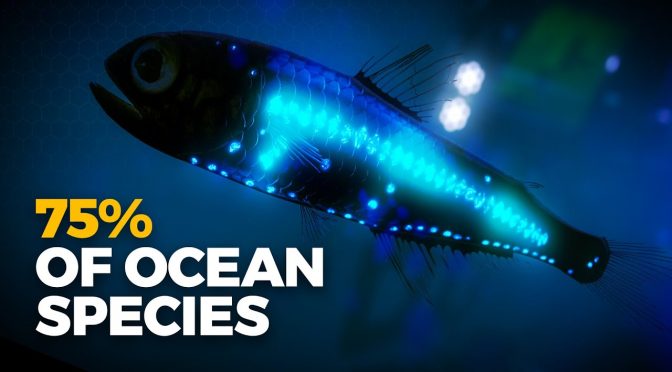Diving into the mysterious world of bioluminescence, this article explores the fascinating phenomenon based on the YouTube video “Why Is (Almost) All Bioluminescence in the Ocean?” by Real Science. Delving into the depths of the ocean, we’ll unveil the secrets of glowing creatures that have adapted to a world of darkness and discuss why bioluminescence is so common in the ocean but rare on land.
The Magic of Bioluminescence
Bioluminescence, the ability of organisms to produce light, is one of the most widespread adaptations in the ocean. More than 75% of ocean creatures, ranging from tiny bacteria to large sharks, have developed this ability through convergent evolution. Researchers have discovered that bioluminescence is not limited to the darkest parts of the ocean, with a similar proportion of glowing animals found at all levels, from the surface to the sea floor.
Terrestrial Bioluminescence
On land, bioluminescent organisms are rare, with only a few species of fungi, arthropods (such as fireflies), and larvae (like glowworms) capable of producing light. Although the terrestrial world is also engulfed in darkness half the time, bioluminescence remains a rare adaptation. The question then arises: why is the watery world more conducive to bioluminescence?
The Two Types of Bioluminescence
Organisms that use bioluminescence have two options for producing light: intrinsic and symbiotic. Intrinsic bioluminescence involves mixing chemicals within their bodies to produce photons of various colors and intensities, while symbiotic bioluminescence requires cultivating colonies of glowing bacteria in specialized organs. The chemical process involves a molecule called luciferin, which generates light when mixed with oxygen and a luciferase enzyme.
Evolution of Bioluminescence
The first bioluminescence is believed to have appeared between 2 billion and 500 million years ago. Intrinsic bioluminescence evolved eight times in fishes, whereas symbiotic bioluminescence occurred at least 17 times, always with the same family of bacteria. On land, bioluminescent adaptations appeared later in fireflies and other insects, evolving from a single ancestor that lived around 65 million years ago. In fungi, bioluminescence can be traced back to 160 million years ago, evolving from one common ancestor.
Bioluminescence for Defense and Predation
In the ocean, bioluminescence serves as a defense mechanism for prey, while predators use it to lure their meals. On land, glowing organisms like fireflies use bioluminescence for mating purposes, attracting mates with specific flashing intervals. Despite its utility for some creatures, bioluminescence is rare on land, possibly due to the toxicity of the chemicals involved and the relatively shorter evolutionary timeline for terrestrial life.
Conclusion
As we continue to explore the enigma of bioluminescence, we should also be on the lookout for this phenomenon in extraterrestrial life. Where there’s water and air, there’s a good chance we’ll find glowing life, adding to the ever-growing mysteries of our universe.

